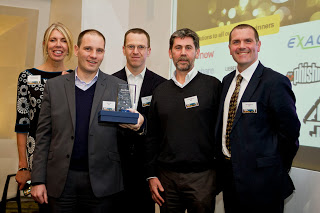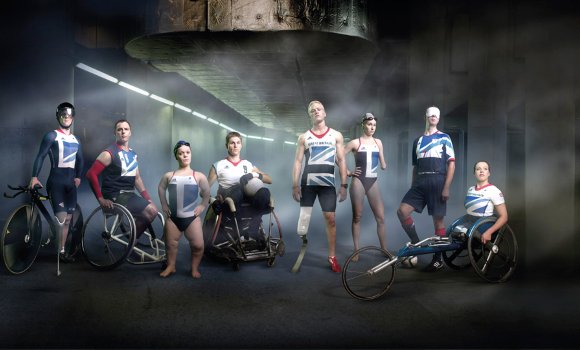How the storyteller got her PR stripes
Are you sitting comfortably? Then I’ll tell you how I fell into PR
Once upon a time, many years ago, there was a very bored admin manager who worked for a software development company. She found her job excessively dull, and so would spend much of the day quietly sitting at her computer, writing short stories. For some six months, she (barely) managed to perform her admin duties while working tirelessly on her craft, and soon enough her stories started to get the literary recognition she so desperately craved.
But then one day, the CEO – an entirely overly motivated individual, in her opinion, whom she’d successfully managed to avoid in the main – summoned her to his office. Her heart sunk when she saw upon his desk a sheaf of printouts, not of the latest tedious project timelines, but varying drafts of her stories and poems.
She braced herself to be fired: what cared she? She would live in an attic, make a career move out of being miserable and thin, wear fingerless gloves and die a fine and beautiful death of consumption.
“These are rather good,” he said evenly.
Momentarily thrown off balance but determined to remain on the offensive, she replied, “Well if you can’t give me enough to do, I have to get through the terminable day somehow.”
“My fault entirely,” he concurred with a half-smile.
She glared at him balefully. Was he just passing time waiting for the HR lackey to come in and do his dirty work for him?
Apparently not. “So I was wondering if I might prevail upon you to apply your talents to writing a few stories about the company, our solutions and how we help our customers grow and so forth…”
“Oh, I don’t think so,” she interrupted, immediately seeing a flaw in his plan. “They’d be so boring: who would want to read those?”
“Ah, yes,” he replied with a mere smidge of a vindictive twinkle in his eye. “But it would be your job to make them interesting, tell a good story, engage the reader and what not. Then, maybe, you might talk to a journalist or two, see if you could interest them in writing their own stories about us…”
She looked at him aghast. Why, just the thought of it made her feel queasy. “PR! You want me to do PR??” How very dare he? ”I shan’t do it, I shan’t! You can’t make me!” she wailed.
“Well, no need to agree the brief right now. Why don’t you have the rest of the afternoon off to think about it?”
She grabbed her papers from his desk and stalked with great dignity from his office, not trusting herself to speak.
And so it was that after a sodden gin review of her overdraft facility, our heroine reluctantly conceded that just possibly there were worse things one could do for a living than telling corporate stories.
She’d just do it for a few months before she went and found herself a proper job or, at least had saved enough for a deposit on an attic and a pair of fingerless gloves…
And so, best beloveds, thanks to the thankless intervention of a remarkable CEO, I began my twenty year, hugely enjoyable and vastly rewarding career in PR.
Funny that now, ‘PR is all about telling stories.’ I thought it always was…
Why is US B2B PR so difficult?
Time to read: 2 minutes
Just so happy to be doing transatlantic PR again, here’s a post from our US PR partner on why it’s not easy securing the US column inches. 
It doesn’t matter where in the world you want PR coverage, you will find the journalists you need are a busy lot. Their publications are under competitive attack, staff have been cut, acquisitions and closures are commonplace, everyone is doing more with less and covering more areas and, well, it all sounds rather familiar doesn’t it?
Journalists and their organizations face many of the same issues you do in your business. And just like any busy company expert, journalists want only the most insightful and relevant information and sources to ensure they do the best job possible. That makes getting their attention, building a relationship and winning their trust all the more challenging and important.
The U.S. journalistic landscape is similar to the UK although larger. According to Pew Research’s “State of the News Media 2014” report there are 38,000 full time journalists employed within the traditional U.S. newspaper industry alone (not to mention TV, magazines, etc.). Comparatively, the European Journalism Centre reports similar full time newspaper journalists in the UK. Digital native sites are growing on both sides of the pond, yet still employ only a small numbers with about 5,000 full-time U.S.-based editorial jobs at nearly 500 digital news outlets.
Whether traditional or digital, one big difference is ownership. Certainly there are U.S. conglomerate owners, however the UK newspaper market is generally far more nationalistic with fewer owners.
What does all this mean to you? Obviously you aren’t after every US journalist. You want only a logical niche of decision makers to notice your new product/service or entry into the market. As you should. But that doesn’t necessarily make it easier.
Here’s why. Think about your competition. How many companies will you compete with in the U.S.? 10? 20? 50? More? How many of your European competitors are also entering or active in the U.S.? How many non-industry companies are nipping at your heels trying to steal the same potential customers?
Each of those and all the ones not yet identified are engaging PR to contact the same journalist you want. Whilst there are about 50,000 PR professionals in the UK, there are nearly 230,000 PR professionals in the U.S. Talk about competition!
Now think back to that busy journalist looking for someone to validate or negate the premise of an article (yes that has a lot to do with it). The journalist must be accurate. And the editor and the publisher need them to have a differentiated story than the other media outlets in their niche. After all, eyes on their story and their publication translate into revenue for survival.
So, who does the journo turn to? Someone they know will deliver. And yes, despite journalistic outcry, the line is blurring between editorial coverage and those who do or could buy advertising or sponsorships. Remember how different the ownership of US media outlets is compared to the UK? That can increase in importance when those paid and earned media lines blur.
So the number 1 reason it is trickier to get your story told by a U.S. journalist is pure and simple -competition.
And #2? Your story absolutely must be relevant to the U.S. reader/viewer. It is not enough to believe your product/service is right for them. It means understanding U.S. centric issues and trends – not just of your potential customers, but of the journalist as well.
Your chances will significantly improve if you can produce a U.S. customer. Some journos won’t talk to “vendors” without one. If you don’t have a U.S.-specific example, the challenge for coverage is even greater. Not impossible, but challenging. It is very likely you will share the story with one of those U.S. competitors you identified.
But it’s not all doom and gloom. Truly, it’s not. You just need the experienced insight of localized PR. That’s the same in any country. A world view is quite important strategically but localized insight is invaluable.
As for the U.S., remember those growing digital outlets? Turns out, whilst mainstream U.S. media are sharply decreasing their global coverage, digital is on a quest to include more global coverage. And that spells opportunity! Plan your strategy wisely. This is the perfect time to think global and act local.
How to ensure AR programmes deliver to the bottom line – part three
Time to read: 3 minutes
The third post courtesy of Eria Odhuba, a founder member of the team and our resident analyst relations guru:
In part one of this series, we looked at the reasons AR programs fail and what you need to do before speaking to analysts. In the part two we provided some metrics you should consider measuring and a few questions you need to think about to maximise the impact AR has on your marketing. And in this final part, we look at how to integrate your good work with analysts and your wider marketing activities, ensuring everything feeds into your overall business objectives…
Do people REALLY know what they will get from the description of your products or services?
Your problem: If you only offer services, this can be one of the hardest things to do correctly. How do you convince prospects to buy from you if it takes time to realise any major benefits? Are you confident that the way you have named or packaged what you sell clearly articulates the benefits that clients would get if they bought from you? If prospects don’t know what benefits they get from what is on offer, then price is all they’ll use to make purchase decisions. The impact on your bottom line is huge if your competitors package themselves much better than you do. Quite often, poor product packaging happens when marketing and sales teams don’t interact effectively.
How analysts can help: Analysts can provide guidance regarding product or service packaging as part of wider marketing efforts. Their unique insight into the various strategies used by competitors, means they can help build services around your unique perceived benefits (UPBs). They can also show you how to break services down into logical processes that are easy to follow and which, more importantly, clearly show what prospects will get.
Do you know your customers’ lifecycles and do you change the way you provide value to them over time?
Your problem: A customer lifecycle is the journey someone makes from the initial discovery of your products / services to being a client. It is important to understand lifecycles so that you manage client relationships effectively and tailor your messages or services accordingly.Marketers, therefore, always need to answer the following questions so that they add value to each stage of a customer lifecycle: What factors influence initial purchase decisions within specific niches? What do competitors offer? What end results do clients actually desire? What are the market / technology changes that impact the continued use, or upgrade, of specific technologies or services? Without this information, marketers will struggle to effectively manage each step of a typical customer lifecycle. For example, think of companies that have simply tried to renew contracts or upsell additional services without tracking client needs properly. Tales of woe after deals have been signed are common, and a lot of this is down to the inability to manage the various stages of customer or partner lifecycles effectively.
How analysts can help: When you are fighting day-to-day battles and trying to get quick wins to justify marketing budgets, it can be hard to step back and have a big picture view of whole lifecycles and the different engagement methods necessary to nurture early prospects or long-term clients. Getting independent feedback on how best to do so might not be something you have considered.How analysts can help: Analysts, especially those that have a good knowledge of licensing and contracts, can provide independent advice to companies to help them manage customer lifecycles better. Of course, the products and/or services you provide have to be spot on in the first place. However, given the fact that there is almost always an alternative choice that could be made, marketers should use industry analysts to stop customers getting fed up and looking elsewhere because their continually changing needs are not being met.
Are you using the right traditional and social media channels to communicate?
Your Problem:Every marketer knows they have to communicate through the media channels that their prospects and clients use to look for information.Your problem: Whatever media channel you use to generate leads, solidify thought leadership or remain top of clients’ minds, you need to know which ones the analysts use to share information. For example, you need to know whether you potentially lost a deal because of comments made by an analyst via a blog or online forum. The problem here for marketers is the perceived loss of control and the lack of resources to do this effectively. It can be tough to justify the time and effort given the tight budgets many marketing departments have. It all comes back to the feedback you collected from clients and prospects
How analysts can help: If prospects / clients are influenced by specific channels that analysts also use, then you need to make sure you engage with the analysts via the same channels (on top of regular briefings) so that you can positively influence their output. Commenting on their blogs and participating in discussions helps you understand the frustrations analysts have with technology vendors. It also means you engage with them more effectively and, hopefully, can convert them into advocates.In conclusion
AR is often seen as an add-on to marketing and PR activities that is hard to measure and whose budget is hard to defend. It can be tough to stick your neck out and plan long-term engagements when we are all judged on quick wins.
But, trust is a hard thing to come by now, and we are pretty cynical about most of the content and claims from many technology companies. Engaging wth analysts, earning ther respect and winning their support can deliver the esssential credibility factor into the marketing mix.
***
Award-winning clients – I’m basking in their reflective glory
Time to read: 1 minute
Tips for entering Tech Awards
Last week, BJSS, a CommsCrowd client, won the TechWorld Award for Best Public Sector project. It’s a genuinely cool project, re-engineering a very big data warehouse, bringing it in house, fully automating it and helping the NHS to save on human resource and money – both scarce commodities in the public sector these days.
 |
| if you had to guess which one of us was not an award-winning software engineer, who would you pick? |
The awards themselves were also impressive, in a transparently objective kind of way, projects were free to enter, award ceremony free to attend and they even gave an award to a company that couldn’t make it – in all my days I’ve never seen that before – fair play.
So I am very pleased for my client, it’s a huge validation of the great work they are doing and I’m pretty pleased for us too. I didn’t write the award-winning software but I did have a hand in writing the award-winning entry.
Here’s some tips for drafting those perfect 1,000 words:
- Get buy in – you can’t do these on your own, work as close as you can with the client ping pong the entry back and forth until it’s perfect.
- Allow enough time – we think it takes about a day and a half on average to draft and edit a standard 1.000 word award entry and that’s assuming you already know the story.
- Start early – it at least three weeks before – get information from source, ie the people that worked on the project.
- Answer the question – every award has a bias so be sure to answer the questions exactly as asked.
- Word count – keep it tight and don’t waffle.
- Before and after stats demonstrating ROI – without these don’t bother to enter.
- Have a heart – think of the poor judges and how many submission they have to read, do make an effort to tell a darn good yarn, keep the narrative sparkly and fluid.
Post Script: other award winning entries include:
- 15/04/2013 Caplin wins Best Web Implemntation at the Sell Side Technology Awards
- 02/12/2013 BJSS wins Best Big Data Project at the Tech Success Awards.
- 15/04/2014 Caplin wins Best Web Development Platform at the Sell Side Technology Awards.
- 14/06/2014 BJSS wins Best Information Technology at the Best Business Awards
- 14/07/2014 BJSS ranked fourth for International Growth in Sunday Times Tech Track 200
- 15/07/2014 Caplin wins Best Trading Technology Vendor at the FX Week Awards
 |
| Gonna need a bigger banner |
The hidden dangers of PR career talks
Time to read: 2 minutes
Sam Howard lives to regret and for that at least she is grateful…
In its latest initiative to bridge the diversity gap, the CIPR is to go into secondary schools to explain what a career in PR entails. On the back of my work with The Taylor Bennett Foundation, and USC Annenberg, I’ll be looking to lend a hand. Odd how things turn out – given that my first ever careers’ talk was possibly a tad off message…
Admittedly the weekend before the gig, it did occur to me that possibly the standard company creds deck, designed to impress your most hard bitten city type, didn’t have quite the right content nor tone for a ten year old from an underprivileged, wildly diverse school in Neasden. But either I built a deck from scratch which would take a couple of days and I would never use it again, or I could just make it up as I went along, after all, what would they know? My talk was scheduled for Thursday.Although not entirely sure of my proffesion, my son’s primary school knew I rushed around a lot, shouted into my phone, and muttered darkly about jet lag. And so the headmistress made inquiries as to what it was that was so important, I had yet to attend a single cake sale. On discovering it was comms, she offered me a slot on careers’ week, saying it would, ‘make a nice change’. I love public speaking me, so penciled it in without a thought.
On Monday, Elliot was, buzzin’. A midwife had kept them enthralled with heart-warming tales of delivering babies, saving lives and what not. “How super!” I said, though this midwife person sounded like bit of a show off to me.On Tuesday, when I picked him up, he was equally full of it. The local policemen had visited with his dog, Blaze, who by all accounts was a magnificent beastie. “Hasn’t he got better things to do?” I miffed, as Elliot noted I was doing 35 in a 30 and that technically he should make a citizen’s arrest right there and then.
On Wednesday, a bloody bastard fireman rocked up.
“Perhaps I should bring in my awards,” I wondered out loud.
“He parked his fire engine in the playground,” said Elli cheerfully, “Let us climb all over it.”
“That’s cheating!” I howled in dismay.
My boy looked at me levelly. “Yep. You’re really up against it now Mum.”
Now, I know at this point, I could have built a deck that talked earnestly about reputation management and CSR. But people, my back was against the wall here and besides my kid was in the audience. That night I dug deep for inspiration and the shiny new deck, was unlike any other deck I have ever built before or after, and ready in the early hours of Thursday morning.
And so it was that I sashayed into that classroom dressed for a full on six-way City pitch. I cast a disdainful eye over my charges.
“So, I hear you’ve met a mid-wife, a policemen and a fireman already. Was it just great hearing about how all those clever, kind and brave people have dedicated their lives to helping others?” And they chorused that it was, it really really was.
“Well I can tell you now,” I said fixing them with a steely gaze.
“I don’t do anything like that at all.” An attentive hush seeped through the room.
“What I do, is a very, very TERRIBLE thing.” There was a collective intake of breath.
“You see,” I said archly as I span neatly on my highest heels and began to pace the room. “I work for the dark side.”
I had them.
“What I do is make MONEY – by helping other people make MONEY. Lots AND lots of it.” The headmistress actually seemed to be sliding down the wall, but the kids, they were on the edge of their seats…An adrenalin-fueled hour later, sharing a celebratory MacDonald’s with the boy, he passed his judgment.
“I liked the bit when you talked about trainers and celebrity endorsement and brand advocacy. Like, who knew there was no such thing as free will.” And he munched on his onion rings reflectively.Looking at me with a sly pride he pronounced, “You did good mum, you did good.”
Though strangely I was never invited back…
Made by clever people for clever people
Time to read: 1 minute
In fintech Sam Howard asks can comms people add value or are they the weakest link?

I’m a comms person in b2b tech, primarily fintech. Fintech – that’s software geeks creating awesome stuff for banking geeks.And all fintech comms people have to do is wrap their pretty little heads around how the the global markets work, how a financial institution works and how it makes its money; then evaluate the opportunities and obstacles created by the latest market conditions and regulations that might help or hinder it making that money and just piece together how their client’s technology taps into those opportunities/overcomes those obstacles, so that a bank might want to buy it.
Anyone got a PHD in anything at all they are not using right now?
Dear software geeks, we understand your fear of getting us comms people involved, we share your fear. We have reoccurring nightmares where Anne Robinson is sufficiently underwhelmed by our efforts. But Einstein once said if you can’t explain it to a six year old, you can’t explain it. Let’s assume all the people in the room are clever, it is the common denominator, so there is no need to posture on that. Don’t be tempted to use content as an opportunity to show off how much you know – they know you know.The key then is to add some value to the debate, to explain the complex lucidly, to ensure that overarching points are not lost in the minutiae of the detail and that those points stack up to a logical argument leading to an insightful conclusion.
It’s not as ‘easy’ as it looks, I can tell ya, getting the people with the PHDs to look up not down, out not in. And if in so doing we tend to simplify things, rather than wonder if we haven’t dumbed down your whole reason d’etre, just trust, you know how to build software, we know how to build reputations.
In the kingdom of the big and the clever, it’s the six year old kid you need to impress.
Ten tips for better media interviews
Time to read: 2 minutes
Sam Howard advises on how tech companies can give better interviews.
Media training – that’s a terrible phrase isn’t it? Makes you think of all those awful politicians that enunciate every syllable emphatically, use all their fingers to underline each phrase and talk at you as if you were Jeremy Paxman. So let’s not go there. But there is still much you can do to make sure your conversations with journalists go well. Key, is to remember the journalist has very little time to create a very good story, and it’s your job to help them with that.
Some sensible tips for sensible interviews:

so it’s adaptable scalable innovate and flexible is it? Yeah you lost me at ‘it’s’
1) The Press as a whole are more concerned with business arguments than technology methodologies so the WHY needs to be answered way before the HOW and this is where many tech companies need to lift up their heads. The WHO is pretty interesting too, so whatever you do, don’t tone down your colourful characters.
2) The old truism,’ no-one is that interested in you’ is – erm – true. They are interested in issues though, so if you can help solve them, then that’s the angle to go in on.
3) Journalists are very busy people, so PLEASE get to the point. Work out how your issue-based messages can be delivered top down, so if you’ve struck a chord you can drill down with more insight or leave it as a one liner if it gets no traction.
4) It sounds obvious, but actively listen to the question and genuinely try to answer it.You need to answer questions as best you can and weave in your messaging where appropriate and leave it out where it isn’t. It’s critical to be seen as someone who understands the market and how it ticks. This is more important than getting all your messages across in each and every interview, euch! You may manage it the first time, but I doubt if anyone will want to talk to you a second time. However if you can establish yourself as a credible and trusted source, then the journalist is more likely to make time to talk to you when you do have relevant news.
5) The journalist is looking to create a compelling story from a mixture of background information, intelligent argument and quotes, so if you want to be quoted you need to have a view and be incisive; otherwise you find most of your effort gets swallowed up in unattributed body copy or as background information. Answers can be your own thoughts based on experience or theory, statistically or anecdotally-based or ideally a mixture of the lot.
6) Spokespeople should be reading a weekly digest of relevant hot stories, remember head up!
7) It should go without saying but follow the publication and the journalists you are hoping to meet, so you can assess what messaging will resonate best for that particular journalist.
8) Be courteous, Allow time for the journalist to finish their note taking and prepare their next question, do not dictate or just talk into the silence. Offer sustenance, and DO NOT look at your phones.
9) Remember this is a two way conversation, ask what the journalist is seeing and hearing in the market and future story ideas he is working on.
10) Every interview is different but you should be able to answer the following fundamental questions:
. In these cash strapped times, where are your customers spending their IT budget in your sector?
. What are the drivers behind this (i.e. sticks and carrots)?
. So where do you fit in?
. Other companies do what you do why are you better?
. What tech Holy Grail are you customers chasing right now?
. What’s preventing organisations from achieving it?
. What are the key trends in your technology sector right now?
. What’s your sector going to look like in five years’ time?
You can download these tips in a handy pdf if you like to keep on your desk and front of mind.
When men inspire words, and words inspire men
Time to read: 1 minute
Sam Howard pays homage to the Olympians and the Wordsmiths.
 |
| Thanks for the warm up. Now meet the Superhumans. If writing strap lines was an Olympic sport, that’s your gold medal winner right there |
So clearly, clearly it’s not ‘disabled’ it’s ‘differently-abled’. A term that’s been around for years, but now looks set to be embraced wholesale after the last two awe-filled, outrageously beautiful, amazingly uplifting weeks, which have left us feeling spiritually renewed and oh so proud.
So what to do now with the defunct phrase ‘disabled’? It works ok if you throw ‘temporarily’ in front of it. Like, you fall off your skis and break a load of bones – you are temporarily disabled. Cos you’re probably just going to sit it out and sulk about a bit while you can’t do anything, until such time as you can.
Another way it could be applied is to those of us that are just useless at sport. At 6ft I”, all shoulders, arms legs and feet – you’d think I’d be good at something, anything. But as my sporty father could testify, from the earliest age I’ve been quite rubbish at everything. Whip smart in my classes I’d get my comeuppance in PE, three times weekly. Instead of letting my sporty dad coach/cajole me into doing anything involving developing physical skills, I preferred to stay indoors writing angsty poems and drawing very thin, dead-looking people. I have remained steadfastly crap at sports, as now my sporty son can testify.
I take some comfort in the belief that I’m not the only one, and I’d very much like to think that maybe it was a sportily-challenged person like myself, sitting in Channel 4’s superb in-house agency 4Creative, that came up with the concept and the words, Thanks for the warm up. Now meet the Superhumans. For those are mighty fine words, that provided the spark that lit the touch paper for the Paralympic flame to burn so very brightly.
A Paralympian, a differently-abled person, a Games Maker, a sports-incompetent, a creative – there’s room enough for all of us to contribute, to make a difference and to make it better.
PR Agency or PR freelancer? Who best to tell your particular company story?
Time to read: 2 minutes
Sam Howard’s top tips for whether to go with a freelancer or an agency.
Recently I turned down a brief. Even my 11 year old questioned the sanity of that one, “Have you seen my Christmas list?” he queried.
Thing is, although the brief specified a freelancer it was for one that had specialist knowledge of everything basically – from travel to technology, from business to design, from gaming to food and a fair few other categories for good measure.
I’m not exactly a one trick pony but this had AGENCY stamped all over it. I recommended a favourite one and waved bye bye to it. I’m as good as my last job and I didn’t see how I could shine at that one. Besides what’s the point of spending 100 hours bringing in results that I quoted I could do in ten?
So if you’re thinking your comms might need a boost from some professional help and your budget is borderline here’s five things to consider when deciding if a freelancer or an agency is in the best position to help:
1) Budget: is the first factor that most people consider. Freelancers should be charging about half their agency rate. “Bargain!” I hear you yip, but it’s not that simple… Say you hire a senior freelancer who is at account director level or above, do bear in mind that day rate is fixed whatever the task, so yes amazing value for money when it comes to strategy and guidance, good value for media outreach and creating content, but when it comes to sourcing coverage, building media lists, feature research, reporting tools etc, not so much. In an agency, a junior or intern would be tasked with such mundane and time consuming activities, and could charge accordingly. So if you have an admin heavy/consultancy light brief, you might be better with an agency. News heavy accounts (e.g. a release a week) also qualify for this model as they fit better into an agency ‘machine’.
2) Expertise: So if you need lots of different sectors covered off as described above, 100s of media outlets, it’s agency all the way, if you need integrated services, again an agency is often a smart choice although most freelancers have a trusted network they partner up with. But if you want access to senior level support or a fair amount of hand holding again a freelancer might be a better fit as account directors can be pretty thinly spread in a busy agency across six accounts or more. So your monthly retainer may only allows for a day – to half a day of precious ‘AD’ time.
3) Capacity: Everyone knows it’s feast or famine for freelancers, but feast for a freelancer might not be a banquet for you, the client. Be sure to have a good understanding of your chosen freelancer’s workload and exactly how many concurrent clients they have. It maybe their eyes are bigger than their hands on abilities. This is less of a problem for agencies who have a bigger pool of staff and of course can hire should work levels remain consistently high.
4) Best practice: A good agency continues to hone and develop best practice, the opportunity to learn in an agency is one of the most compelling reason to work there. A freelancer from ‘birth’ will not have had the same exposure and will have had a different learning experience, They may have developed some shabby habits and I’m not just talking about dress code. If you are going to work with a freelancer, check their pedigree and make sure they have a good few years agency or established in- house experience that they can bring to the table with them. Ask some journalists what they think.
5) Payment terms: And finally if you know your company is somewhat backward at coming forward when it comes to settling its bills, again go to an agency where the two account departments can fight it out between themselves leaving your client relationship cosy. Working directly with a near hysterical, half-starved freelancer who hasn’t been paid for 100 days plus is not going to necessarily get you the kind of exposure you had in mind. Think Sideshow Bob on Twitter.
Whoever you chose to partner with for your comms, go in with a glad heart and some real commitment, so that 2012 is a great year for you both.

Ten tips for securing a PR internship
Time to read: 4 minutes
Sam Howard on one of her pet subjects: Internships are a contentious issue. Pay them? We are getting better at this but if the intern’s work isn’t billable, then where does the funding come from? Don’t pay them and risk being branded as a slave trader? Auction them? Surely not, but they do go for £3k a pop at a Tory Fundraiser. That can’t be right can it, jobs for the boys and all that?

furry hats – hardly ever a good idea
Over the years I’ve hired my fair share of interns. I like to do it, feels good to give someone a break, they seem to enjoy it, and it gives me so much genuine pleasure to watch my protégés go on to bigger and better things. Now, I work with the Taylor Bennett Foundation coaching its interns and also with USC Annenberg, where I head up the post grad London internship programme. This batch of placements began about a month ago and I’m happy to report that without exception the students are delighted with their learning experience and thriving under the guardianship and care of their sponsoring companies.So in this post I’m steering clear of the politics and just passing on my advice for getting on that first rung of the PR ladder, I hope it’s helpful.
1) CV building: It seems in the US there is a strong culture for CV building which I’m not sure we’ve quite caught up with here. Most of my US group’s CVs already boasted not one but several unpaid relevant internships as well as 100s of hours of community service. This demonstrated not only a basic understanding of what PR is in practice but a really strong work ethic. Doing something looks a lot better than doing nothing and doing something for somebody else for free is even better.
2) CV cleaning: This goes for any CV, not just when you are starting out, so do avoid the marketing schpeak there is no need to ‘big up’ achievements. Explain what your actual role was, rather than align your glory to the company as a whole, we don’t really expect juniors to have created global brands, but it’s a real bonus if we know you know how to put a tracker report together. Be bold, brave and honest in your CV. Us PRs do not believe the hype.
3) CV polishing: We want our interns to be able to read, write, spell, have great attention to detail and a good eye for presentation. Use your two page CV to show you are a master of all those trades. Make it work hard for you, put in hyperlinks to your work, your references, your social media profiles.
4) Sort out your social media presence: to me this is more important than the CV. The CV you crafted in isolation, the social media profile is a living breathing organism. Get yourself on LinkedIn build your connections and join your groups and get some recommendations up there as soon as you are able. As for Twitter, follow your favourite bloggers, journalists, brands and companies you would like to work for. Use Twitter to pass on latest trends and tips from the professionals retweet and reply. Same goes for Facebook, but make sure your privacy settings are where you want them.
5) Sector specific: Most of my US group not only knew that they wanted to make a career out of PR but also what sector they wanted and already had some industry grounding to underscore that. On the whole this seemed to work very well. If you are starting out, look to build your experience in pieces, want to work in fashion PR? Get a Saturday job in a high street store, organize a charity cat walk show in your college, represent a local independent store for free, don’t be despondent that you can’t get an internship at Gucci from day one, lead up to it. Therefore the flip side is if you have little or no relevant experience just yet, then you should keep your remit wide open, see each opportunity as one to learn.
6) Agency v in-house: Most of my group wanted to work agency side as they believed the faster pace would give them a more intense exposure. Again I would agree with this, although I would say the mid size and smaller agencies are often much more receptive to giving an intern a good home. Going in house seems to take longer to clear, and also you need to be sure that there is enough actual PR work for you to do, so be clear on the job description if it’s a start up or a few man crew. Be objective, a great brand name might have global recognition, but a smaller agency might give you more responsibility. Do your research, find your specialists, PRWeek can be a good place to start.
7) Timescales: Even with high calibre students and a decent address book it took some time to secure good opportunities. About half the opportunities were secured through some, albeit tenuous, link with the company. I found one internship through a friend’s wife’s bridesmaid’s then boyfriend, who didn’t even work there anymore! But actually it isn’t a case of jobs for the boys here, use social media as your slave to form connections. LinkedIn became my new best friend. While Twitter and Facebook both elicited responses in minutes when email and phone did not. Be prepared to approach at least 10 maybe 20 agencies depending on sector (and certainly not the ten biggest) before you can get to interview stage. I would also look to secure your internship a good six to eight weeks before you actually want to start. An ideal internship should be between one to three months. Anything less and I’m not sure you can learn that much, anything more should at least be paid.
8) Who to send the CV to? Whoever it is you ’know’ is the best answer, they at least will tell you who it should really go to or better still forward it for you, make sure your accompanying mail is intelligent relevant and polite. Don’t be afraid to phone up to find out who to send it to and if it’s a smaller agency do be prepared to really pitch yourself on the phone, you never know who is on the other end.
9) Payment: I’m not getting into this one but it seems the norm is to reimburse travel and lunch expenses. Some agencies do pay a minimum wage but they seem to be in a minority.
10) Interviews: Do take ‘em seriously, if you don’t want this job there are plenty of others that do. Now, I know I sound like your mum here but bear with me, dress the part, clean your shoes, wash your hair and arrive on time. It’s absolutely fine to be nervous but try and be positive too. Bring proof of your skills, written work, clips, references. Demonstrate company, sector and issue knowledge, show you are passionate about our world, prepared to do the admin but hungry for more responsibility. Answer questions honestly and ask strong questions. Enthuse and smile, the person interviewing you may well be the one who will be mentoring you so let them know up front it’s going to be a rewarding experience.


